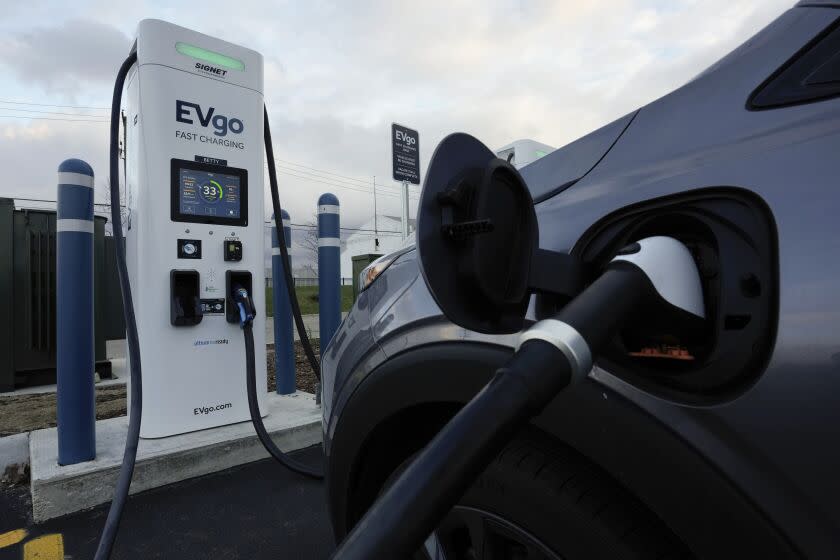Letters to the Editor: When danger hits on the road, AM radio can be a lifesaver

To the editor: So, Sean Hannity is lobbying the government to pressure automakers into retaining a feature in their new models that would prevent the silencing of conservative voices? It would seem to be that if the content provided by these conservative voices is deemed valuable enough to the nation, the free market will take steps to quickly and easily solve the problem — without big government stepping in and bullying private sector corporations.
Isn’t that the argument those conservative voices generally employ?
R. C. Price, San Clemente
..
To the editor: Your article did not go far enough to explain why AM radio needs to survive for the foreseeable future.
When tragedy strikes, AM radio serves as the emergency backbone for the Emergency Alert System and other real-time sources of local information to inform the public of impending dangers and to direct people at risk to safety. When other means of communication are disabled or impaired, and/or the lights go out, AM radio is that vital, last-ditch link to information that can save lives and property.
Unfortunately, some auto industry spokespeople have announced plans to remove AM radios from vehicle dashboards. Those spokespeople suggest subscription services are a replacement for AM radio. That is not the case. Digital emergency warnings depend on the internet or cell service, and most methods the public receives warnings through rely on utility power. The internet and cell towers are often the first things to fail in emergencies due to damage or heavy use. Even if they remain active, streaming services can be costly (not free like AM radio), require prior registration, depend on utility power and are not required by the Federal Communications Commission to pass emergency alert information on to a public at risk.
We need to keep AM radio alive for as long as this old, but still valuable dashboard component remains a crucial and currently irreplaceable emergency public information resource as our only nationwide mass public warning lifeline when all else fails.
Richard A. Rudman, chair, California State Emergency Alert System Committee, Santa Paula
..
To the editor: I frequently listen to KNX in the car, both on FM and AM depending on the fringe reception out here in Riverside. So, I am strongly in favor of keeping AM radios in cars.
However, consider the reason that the electric vehicle manufacturers wish to eliminate it: electric motor static. If one EV causes too much static for one AM radio, consider what thousands of EVs on all our roads eventually will do to low-power radio frequency devices in our homes and businesses like cordless phones, remote controls, Bluetooth devices as well as AM radios, etc.
The static problem should be fixed at the source — inside the electric vehicle.
Bill McQuillan, Riverside
..
To the editor: As a Chevy Bolt owner, I exist somewhere in the Venn diagram of EVs and AM patronage. Without a doubt I would miss AM radio. How else could I laugh my head off listening to John Kobylt of the “John and Ken show” as he irresponsibly slams the “woke” media; brushes off climate change as a hoax while Canada’s on fire and ocean waters off the coast of Florida exceed 100 degrees; and trashes electric vehicles as if he were a shill for Big Oil? To make sure the laughs keep coming, I've hedged my bets; I have SiriusXM radio.
Joe Kevany, Mount Washington
..
To the editor: There are many reasons that AM radio needs to be available in all motor vehicles. The strong signal is not blocked by geography. A mountain between you and the transmitter will not silence the station. You can receive it. FM signals can be blocked by mountains. Also, the AM signal can bounce off parts of the atmosphere giving it even more range. Clear channel AM stations were created as part of an emergency warning system with certain stations allowed higher power output and no other stations using a particular frequency for many miles.
As for interference: A special older friend when I was growing up was an electronics engineer and a ham (amateur) radio operator. He also helped friends install home stereo systems. One time he installed a system in a house that was a short distance from KWKW’s transmitter towers then located in Pasadena. He was able to shield and protect the system’s audio wires from the commercial radio signal. If one man can do that, certainly the mass of engineers in the automobile industry can figure out how to shield a car radio from the electric system moving the car.
Gary Green, Pasadena
This story originally appeared in Los Angeles Times.

